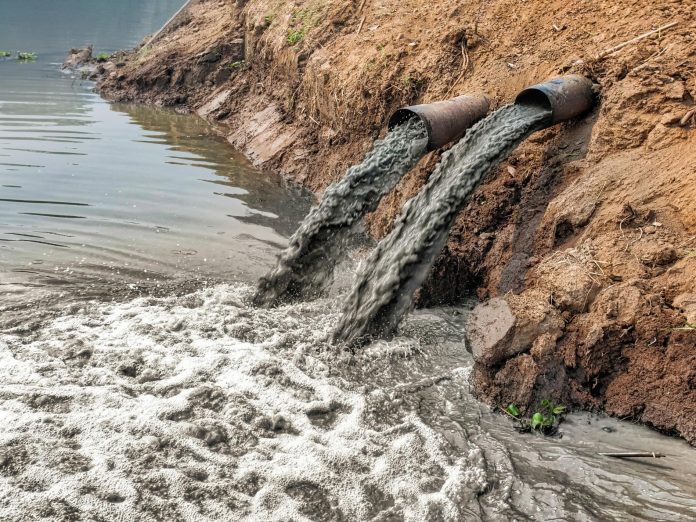This article has been co-authored by Yashahvi Singh and Amisha Sah.
Table of Contents
Introduction
“Man is a complex being: he makes deserts bloom and lakes die” – Gil Scott-Heron
Water is a pervasive natural resource that profoundly impacts our everyday lives. We ingest water directly, use it for household activity, and enjoy it for leisure and esthetic purposes. We need water to produce food, produce power and cool our power plants and we need it to maintain our ecosystem’s services.
Oceans cover three-fourths of the entire geographical area of the Earth and the overall quantity of water on Earth is estimated to be approximately 1.4 billion square kilometers. But the sad truth is that land water, which can be used by humans, is just 0.8% of the total amount of water, while the remaining is in the form of rivers and snow on mountains and glaciers. As of 2015, 29 percent of people worldwide are suffering from a lack of access to safe drinking water. More than twice this amount is at risk of water pollution due to inadequate wastewater treatment.
What’s going to happen with the growing population? 15% of the world population lacks access to clean water and that number is 50% in sub-Saharan Africa. With so much scarcity of water, to add cherry on the cake, there is exploitation of water.
Social aspects
The social cost of pollution concept is very familiar in the context of water pollution. The unequal allocation of water supplies, the unnatural alteration of the natural flow of rivers and human exploitation are the key factors for India’s impending water crisis. If you have decent money to spare, you have fresh water at just a twist of tap, whereas a lot of people have to walk miles to fetch pots of water for days together.
The practice of using fields, forests, lakes, rivers, or other open, natural areas for depositing feces (open defecation) is also a major contributor to water contamination in several countries around the world. Almost one billion people worldwide are still practicing open defecation rather than using a toilet. It is particularly common in South Asian countries such as India and Nepal, where it is practiced by about 32% of people in the region.
Toxic leakage into mining streams and pollutants is an increasing concern, such as per-and Polyfluoroalkyl (PFAS) substances, which are artificial (man-made) chemicals that may be strongly localized in distinct places where exposure is large yet has limited scope outside such regions.
Oil spills are one of the major reasons for water pollution and one of the most unnoticed causes of all. In 1976, an accidental leak of less than 10 tons of crude oil killed more than 60,000 long-tailed ducks in the Baltic Sea. It may be compared with the impact on seabirds in the Alaskan waters. For the nearly 40,000 tons of crude oil spilled from the massive Exxon Valdez oil spill in 1989, approximately 30,000 birds were oiled. Even recently, Russia had declared a state of emergency on 3 June after a major oil leak in the Arctic region. Approximately 20,000 tons of fuel from the Norilsk power plant spilled into the river on May 29, 2020.
The plastic we use, not only creates havoc on land but inside water also. It is the most potential threat to marine life.
Marine scientists from the National University of Ireland (NUI) in Galway found the plastic bits in 73 percent of 233 deep-sea fish collected from the Northwest Atlantic Ocean—one of the highest micro plastic frequencies in fish ever recorded worldwide. | (Lorraine Chow 2018)
Religious aspects of water pollution
In a country like ours, it is very ironic to throw things (Hawan leftovers, ashes, artificial colors, coins, etc.) into rivers in the name of religion; we have been worshiping rivers since time immemorial.
“Possibly the world’s most worshipped river is the most polluted river,” an amazing journey, a maxim stuck with us when Mr. Mallet, Asia News Editor of the Financial Times said this.
Numerous factors play a part in this troubling state of affairs, such as untreated factory and domestic waste and free defecation. However a remarkably high degree of contamination is due to rituals. Statues of gods, trees, pots and ashes are cast into the rivers with impunity. In addition, many ceremonies in the Hindu religion make it mandatory for people to use rivers as a vital part. Immersing the statues of the gods in the river is a hallmark of many large festivals. The paintings and decorations of the idols are not environmentally conscious, and they pollute the water, which in turn influences the flora and fauna. Hundreds of statues are submerged in the festival season of September-October.
Hindu pilgrims stand at their makeshift campsite. Devotees believe that taking a holy dip in the Ganges washes away their sins and paves the path to salvation. —Getty Images
But now when a pilgrim takes a ‘holy’ dive in the river, he/she swallows a huge amount of poisonous material that comes from power plants or from the garbage that is dumped into the river.
There are many religions which follow the tradition of floating dead bodies in the river, which are then consumed by crocodiles. Yet also the ecosystem of crocodiles has been deeply disrupted by the rising pollution. As a result, corpses are now trapped in river plants or float to the banks, adding to the decay.
In Hinduism, the cremation ground (Shmashana ghat) is generally situated near the river, if not there then on the river bank itself. In order to attain ‘Moksha’ , ashes of a human body are dumped into the river and prevents the river from being safe, and all of the people who drink the water are just literally ingesting dead bodies, an unpleasant thought. So, the question here is, do such religious practices help to meet the ‘Moksha’ or do they have an adverse impact on the environment?
It is paradoxical that governments can create an entire city for a festival, such as Kumbh Mela, housing two million residents with electricity, bridges, infrastructure, sanitation, law and order, and health services, but cannot do the same on a permanent basis.
Political aspects of water pollution
It’s been rightly said that the Third World War would be fought over water; and looking at the current scenario, it does not even seem improbable!
Water is a vital natural resource, and potable water shortage contributes regularly to the worldwide political conflicts. With decreasing availability and increased demand for water, some predicted that clean water would become the ‘next oil;’ making countries like Canada, Chile, Norway, Colombia and Peru, with this resource in abundance, the water-rich countries in the world.
The thirst for power becomes so insatiable that people don’t even hesitate to politicize one of the major elements of nature, i.e., water. Politicians have not even left water for their vote bank politics!
The umpteen number of river water disputes that keep on coming up every year shows the sad picture of reality today.
Interestingly, India is the second country in the world to give citizenship to its rivers! It has always been ironic that here we treat rivers as holy; a bath in them is considered to grant you “Salvation”, and have been a dumping place for the sewers of the city. It was high time that we give Salvation granting rivers, a salvation for themselves!
A court in the northern Indian, state of Uttarakhand ordered the grant to give the Ganges and its largest tributary, the Yamuna, the status of living human beings.
The judgment, which was supported by environmentalists, means that the contamination or destruction to waterways should be legally equivalent to hurting an individual.
The judges cited the example of the Whanganui River, admired by the indigenous Māori people, which were proclaimed a living body with complete legal rights by the Government of New Zealand last week.
The Judges Rajeev Sharma and Alok Singh said that the Ganges and Yamuna rivers and their tributaries should be “legal and living bodies of legal status with all associated rights, duties and responsibilities.
The court in the Himalayan resort town of Nainital appointed three officials to act as legal custodians responsible for conserving and protecting the rivers and their tributaries. It ordered that a management board be established within three months.
Although this can be considered as a politically influenced step yet it could prove itself a major reason for people to change their apathy for their rivers!
Economical aspects of water pollution
Approximately 40 years back, none of the Indians have thought that they would have to pay 30 bucks for just 1litre bottle of fresh water! The charitable practice of “Pyaasa” in our country used to make available fresh water for people for free.
With the rise of pollutants in water, drinking straight from wells, rivers, lakes and ponds never remained safe. The people are bound to pay for fresh drinking water and it’s the price they have to pay for mixing poison in the natural resource, i.e., water.
It is fair in all respects to say that tap water generally has somewhat a heavy taste of chlorine. Chlorine and its by-products of disinfection are considered to pose health risks and nobody wants to be the victim of the next cryptosporidium-in-drinking water disaster or any similar horror.
Therefore, it is no wonder that many of us are going to the extra cost and hassle of purchasing bottled water or filtering tap water, even though there is no collection of laws that guarantee that such strategies will be able to deliver more clean water. People do not passively acknowledge the condition. It’s costing us a huge amount of money.
What ‘namami gange,’ the flagship program of the center for cleaning the ganga, couldn’t achieve in several years, nature did by default. Then how can the government justify spending 700 crore rupees to clean this river without any positive results?
The biggest flaw in this and similar programs is that we set out to clean up an already well-functioning river system, just to keep it contaminated with industrial effluents, waste and plastics. Instead of protecting the rivers by blocking pollutants from entering them, we decided to continue to pollute and at the same time clean them.
What if we as a nation were to spend just half of the money as an alternative to tackling the water contamination basis? It could go a long way towards restoring old water treatment plants; supporting the restore wetlands and monitoring efforts at the watershed; and tightening compliance laws regulating clean water.
Conclusion
It’s clear that water is such an integral part of our daily lives and relationships that we are inclined to take it for granted, assuming it will always be in abundance. But that is not the true stance. Polluted water is the main disease source in our Country.
Here are some suggestions from our side:
There is a clear need to amend local legislation with a view to creating the Department of Environmental Management in municipal and large municipalities and corporations.
Stringent inspection parties must be formed and put to real work to look after the water resources, both natural and manmade.
Moreover, it is not just the duty of the Government to make laws but more of a public responsibility for us to be aware and truly educated. It is us that make the country, it is us who must look after our country’s resources.
For every drop of water you waste, you must know that somewhere on earth someone is desperately looking for a drop of water!!- Mehmet Murat Ildan.
LawSikho has created a telegram group for exchanging legal knowledge, referrals and various opportunities. You can click on this link and join:
 Serato DJ Crack 2025Serato DJ PRO Crack
Serato DJ Crack 2025Serato DJ PRO Crack











 Allow notifications
Allow notifications



